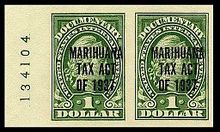
A few years ago, I was going through my grandmother’s things after she had passed away. I came across these little red and green plastic “coins” that said “1 Sales Tax” and “5 Sales Tax” on them. I had never seen anything like them before, and being a CPA, of course I was wondering how something like them could have slipped past me. Thus, started my love of tax stamps and tax coins.
It turns out that these little plastic discs were tokens that were used in twelve states in the early nineteenth century. The number on the coin represented one tenth of one Cent. These coins were used to pay your sales tax. When sales tax first started being collected, the tax had to be paid separately from the purchase. So, you would pay your bill then you would pay a second time for the sales tax which was (and still is) a percentage of the overall sale. The thing was, that it was in fractions of a cent so instead of receiving change, often you would get sales tax coins that you could then use later for paying only sales tax.
This method of collecting sales tax only lasted a few years, in 1933 11 states adopted sales tax as a form of revenue for the state. By the end of the 1930’s the sales tax coin was no longer used except in Missouri, were my grandma’s coins were from; the colorful little tokens continued being used there until the late 1940’s.
Tax Stamps, go all the way back to the Ottoman empire and are still in use today. They are also known as Revenue Stamps.  Today, they are only found on tobacco, alcohol and firearms, but they were once used for almost everything bought and sold to indicate that the taxes had been paid. In 1937, while cannabis was still a legal agricultural crop, the federal Marihuana Tax Act used a tax stamp to signify not only that the tax had been paid on the sale of the plant but what type of cannabis it was (Indica, sativa, or hybrid). Believe it or not, the tax was imposed on physicians who prescribed cannabis as a medicine. Of course, the marijuana tax stamp went away when the plant was made illegal. I am currently writing a book on Accounting for the Cannabis Industry and in it I plan to include more history of the marijuana tax stamp.
Today, they are only found on tobacco, alcohol and firearms, but they were once used for almost everything bought and sold to indicate that the taxes had been paid. In 1937, while cannabis was still a legal agricultural crop, the federal Marihuana Tax Act used a tax stamp to signify not only that the tax had been paid on the sale of the plant but what type of cannabis it was (Indica, sativa, or hybrid). Believe it or not, the tax was imposed on physicians who prescribed cannabis as a medicine. Of course, the marijuana tax stamp went away when the plant was made illegal. I am currently writing a book on Accounting for the Cannabis Industry and in it I plan to include more history of the marijuana tax stamp.
Who knew there is so much history in something as mundane as tax collection. As a CPA who specializes in taxes and as a history buff, I am always fascinated to find a little tidbit of how taxes were collected, used and enforced. Like did you know that the notorious mobster Al Capone was brought in by Revenue Agents and ultimately convicted on tax fraud charges? But that is a whole other story.
